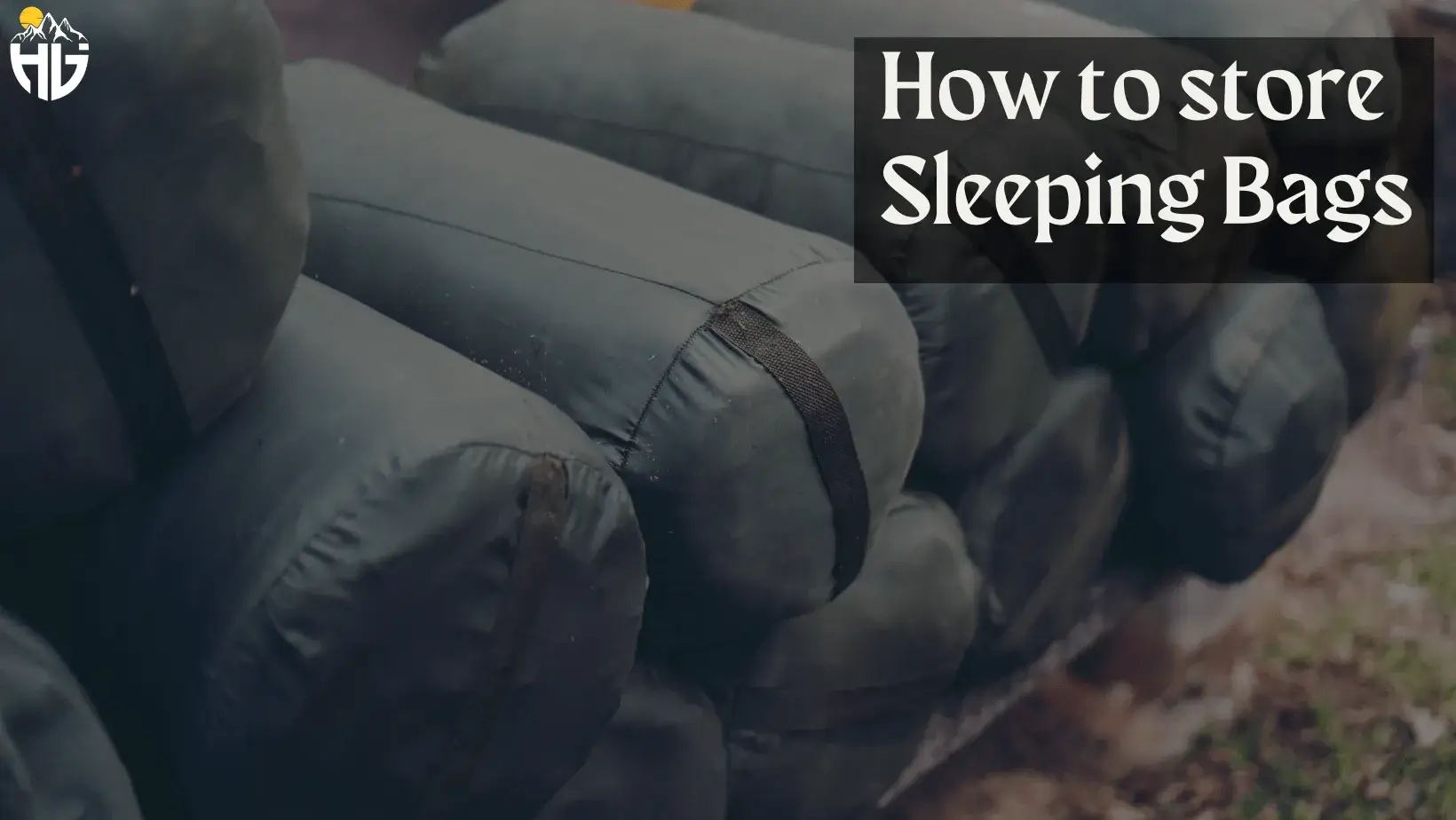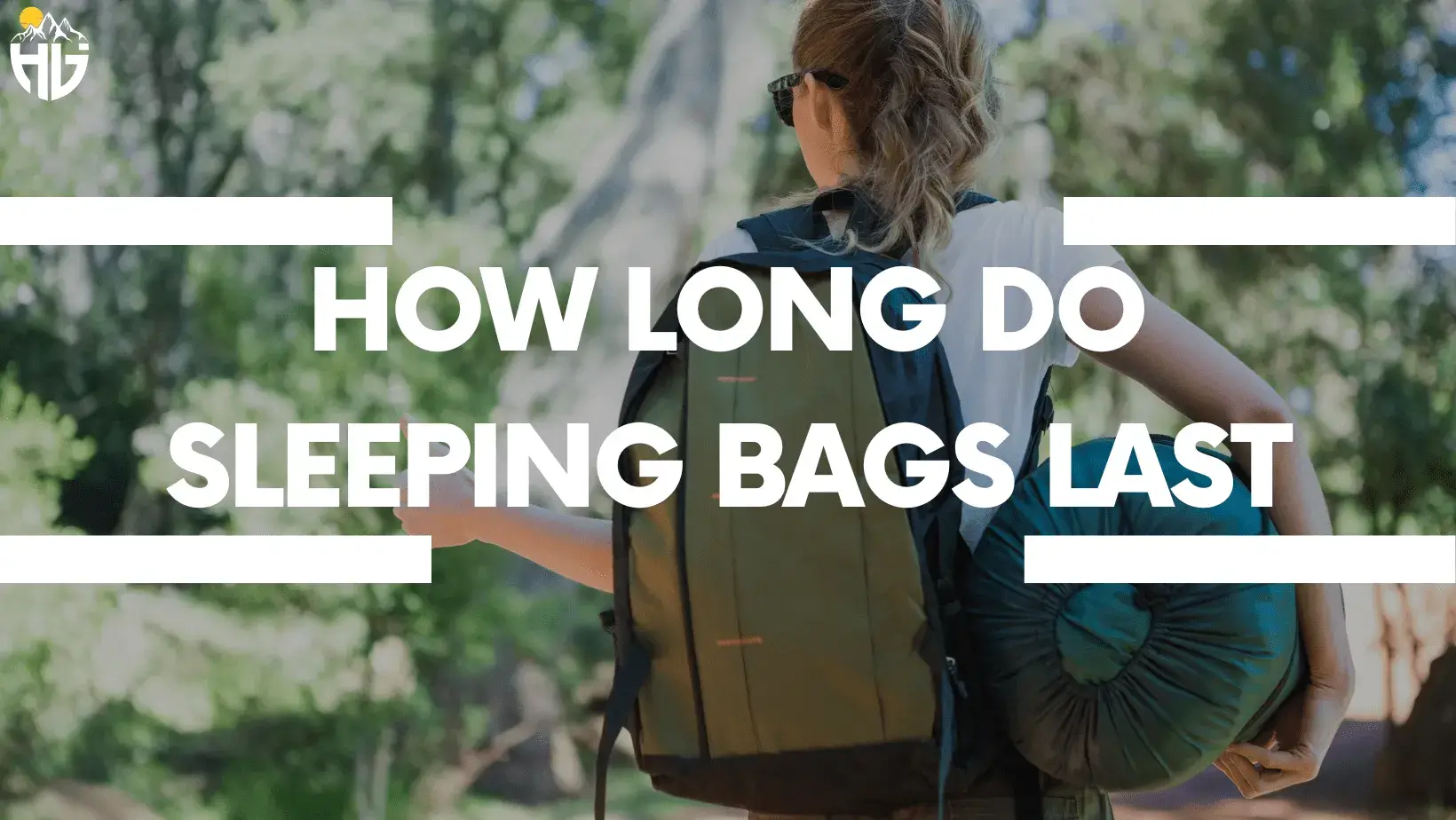What are Sleeping Bags Made of
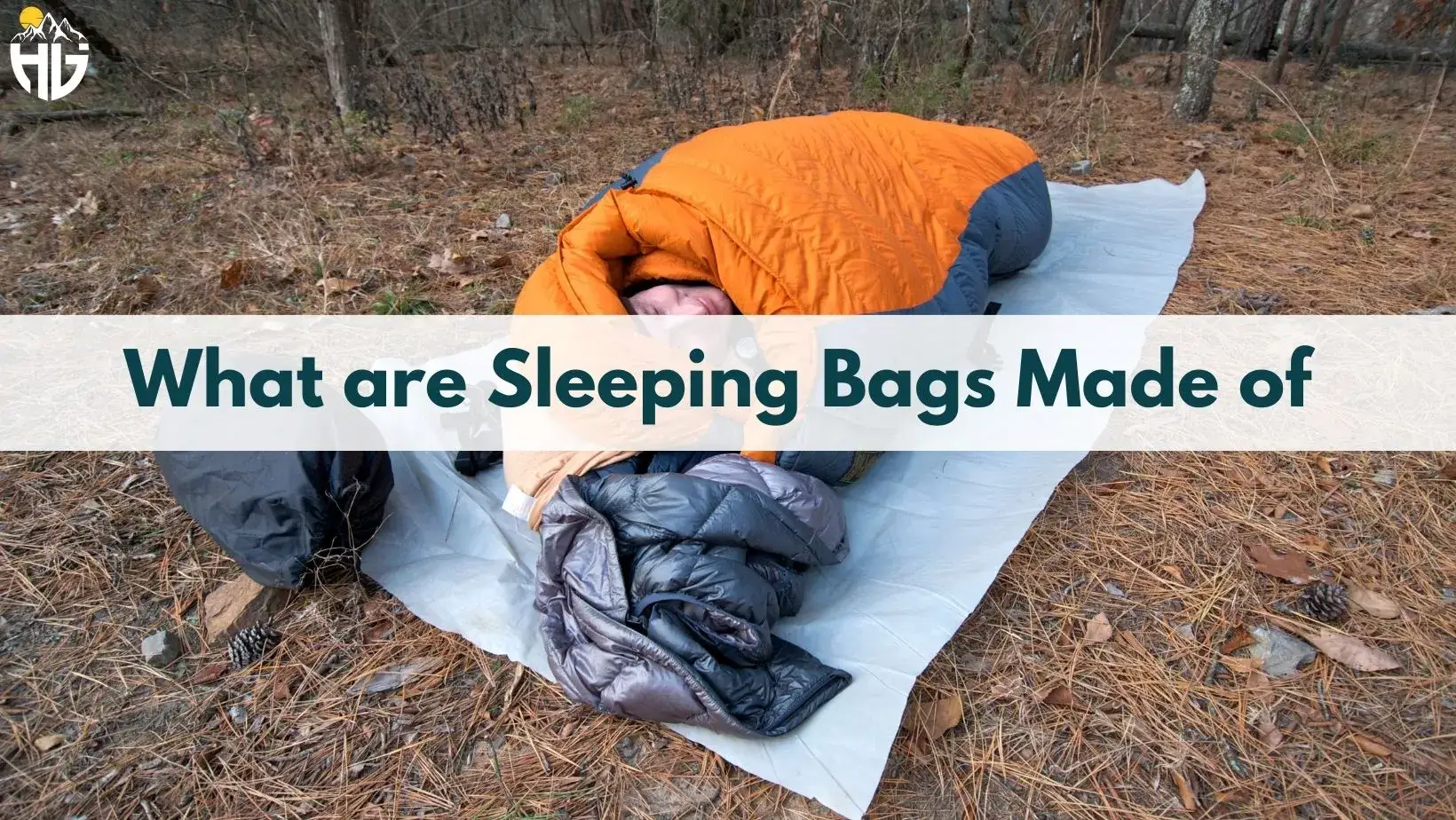
When it comes to outdoor adventures, whether it’s camping in the wilderness or ensuring a comfortable sleep for your baby, a reliable sleeping bag is an essential companion. You can only find a Reliable one, of you know What are Sleeping Bags Made of.
These portable cocoons provide warmth, insulation, and protection from the elements, making them a must-have for any camping or outdoor activity.
Materials Used in Sleeping Bags
The Outer Shell: Protection and Durability
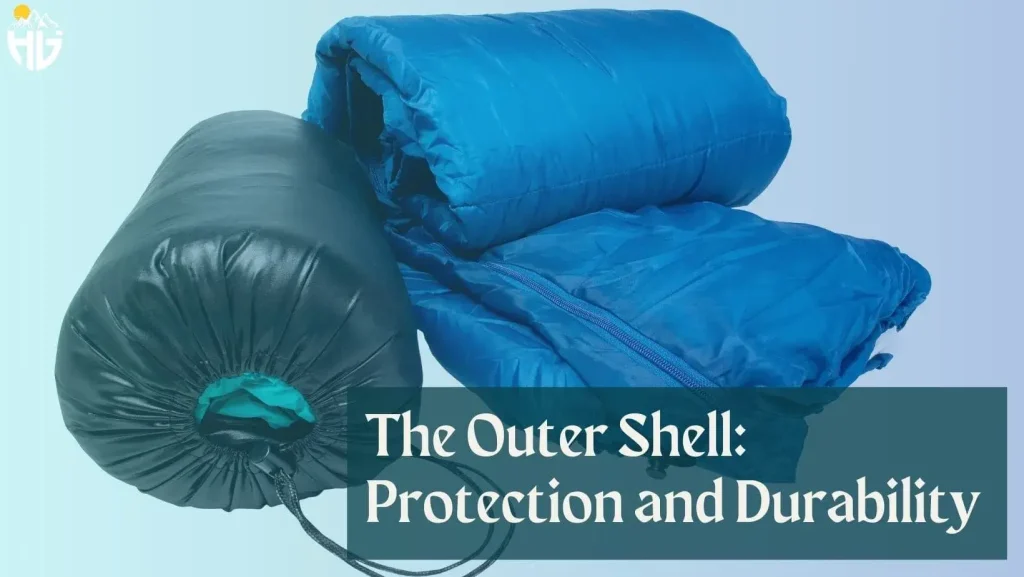
It is typically made from sturdy and abrasion-resistant materials such as
- Nylon
- Polyester
These materials are not only durable but also lightweight, making the sleeping bag easy to carry during outdoor excursions. The outer shell may also feature a water-resistant coating to prevent moisture from seeping in.
Insulations,

The insulation material is responsible for trapping warm air close to your body. Two common types of insulation used are
- Down fill
- Synthetic fill
Down, derived from the feathers of ducks or geese, offers exceptional warmth-to-weight ratio, while synthetic fill, made of polyester fibres, excels at retaining heat even when damp.
Inner Lining
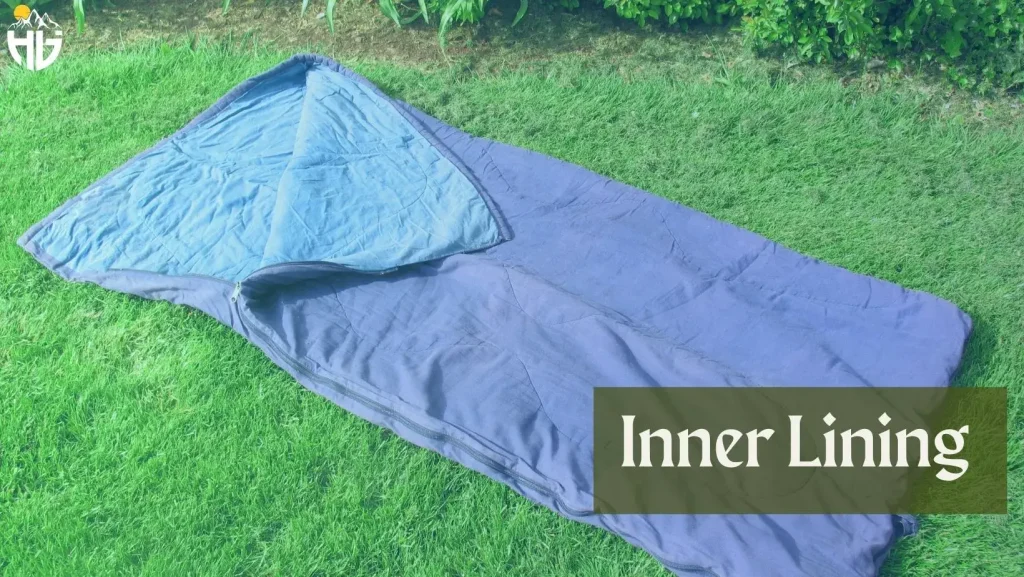
They are designed to wick moisture away from your body, ensuring that you stay dry throughout the night. Common lining materials include:
- Cotton
- Flannel
- Microfiber
Water-Resistant Coatings
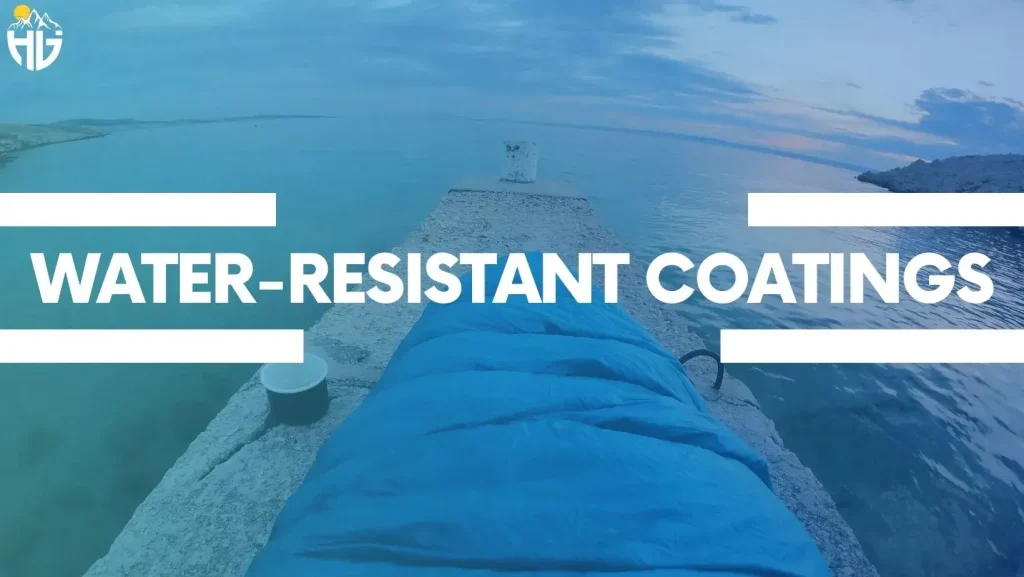
Many modern sleeping bags come with a water-resistant coating applied to the outer shell. This coating, often referred to as DWR (durable water repellent), forms a protective barrier that causes water to bead up and roll off the surface.
This feature is especially useful for keeping the sleeping bag dry in damp or rainy conditions.
Zippers and Fasteners
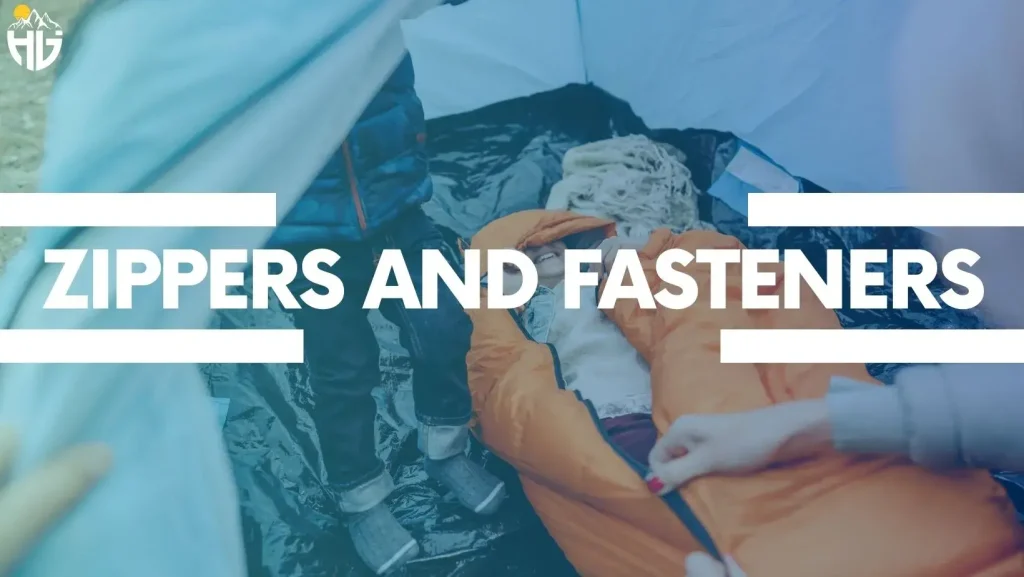
High-quality zippers are designed to prevent snagging and ensure smooth operation. Some sleeping bags also feature draft tubes and draft collars along the zipper line to prevent cold air from seeping in.
Related Post
How to Zip Two or More Sleeping Bags Together?
Stitching and Seams
Baffles, which are chambers created by stitching the inner and outer layers together, help prevent insulation from shifting, ensuring even warmth distribution. Well-constructed seams enhance the bag’s overall durability and lifespan.
Insulation and Temperature Ratings

When you’re out in the wild, whether on a camping trip or a winter expedition, staying warm is not just a luxury – it’s essential for your safety and comfort. This is where insulation and temperature ratings come into play.
The Role of Insulation
It works by trapping warm air close to your body and preventing cold air from seeping in. The effectiveness of insulation is measured by its ability to create a barrier between your body and the chilly outside air. The better the insulation, the warmer you’ll be.
Types of Insulation
Two main types of insulation are commonly used in sleeping bags:
Down Insulation: Derived from the soft feathers of ducks or geese, down is known for its exceptional warmth-to-weight ratio. It creates lofty, fluffy pockets of air that provide excellent insulation.
Synthetic Insulation: Made from polyester fibres, synthetic insulation is designed to mimic the warmth-retaining properties of down. It’s a great choice for damp conditions, as it retains its insulating properties even when wet.
Understanding Temperature Ratings
Temperature ratings indicate the lowest temperature at which a sleeping bag can keep an average person warm. They are usually given in ranges, such as a comfort range and a lower limit range.
For instance, a bag with a comfort rating of 20°F might keep you comfortably warm at temperatures above 20°F, while its lower limit might be around 10°F.
Three-Season vs. Four-Season Bags
Three-Season Bags: These bags are designed for spring, summer, and fall. They provide adequate insulation for moderately cold temperatures.
Four-Season Bags: Built for extreme cold, these bags can handle winter conditions. They come with added insulation and features to combat low temperatures.
Finding Your Comfort Zone
Your comfort zone depends on factors like personal preference, metabolism, and how you sleep. Some people naturally feel warmer than others.
Consider your typical sleeping conditions and choose a bag with a temperature rating that aligns with your comfort needs.
Different Types of Sleeping Bags
Different types of sleeping bags are designed to cater to various needs and conditions, making it crucial to understand their features and benefits.
Mummy Sleeping Bags
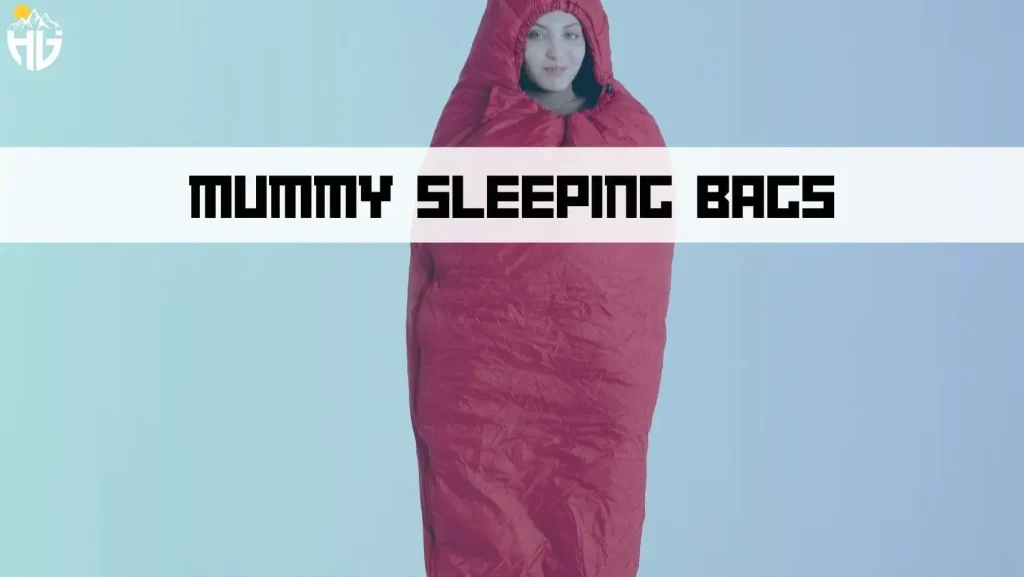
Mummy bags are designed to mimic the shape of the human body, tapering towards the feet. This snug fit minimises open space, making them incredibly efficient at trapping warm air close to your body.
They’re a popular choice for cold conditions and backpacking due to their lightweight and compact nature.
Rectangular Sleeping Bags
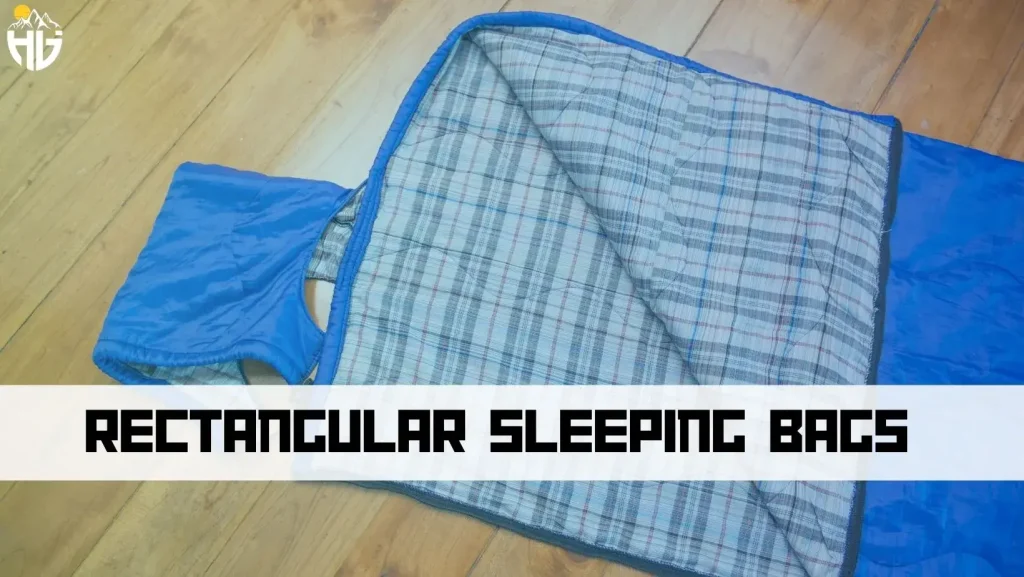
Rectangular bags offer more room for movement and a more traditional bed-like feel.
They’re great for campers who prioritise comfort over maximum warmth and are ideal for summer camping or indoor use.
Semi-Rectangular Sleeping Bags
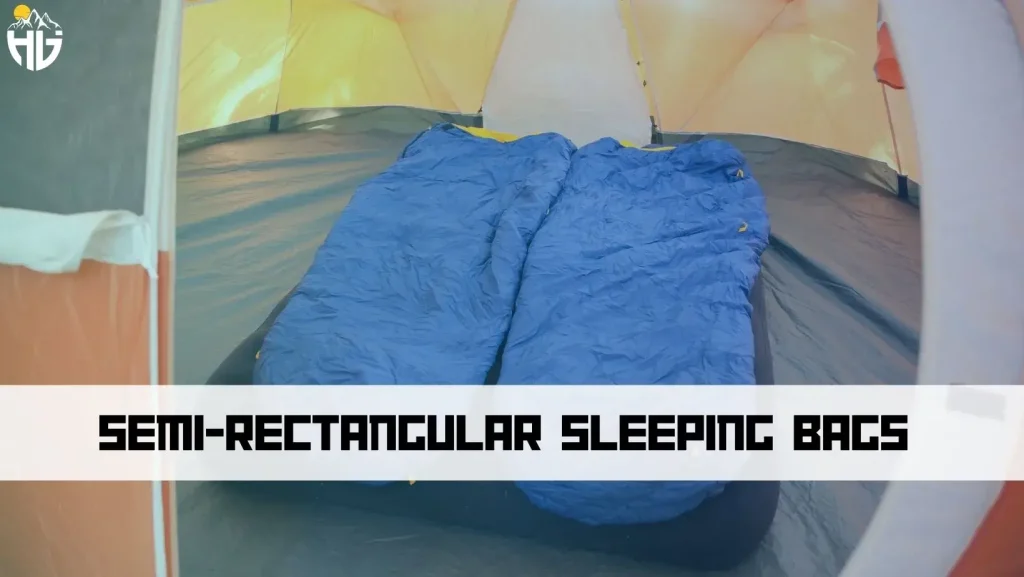
Semi-rectangular bags strike a balance between the efficiency of mummy bags and the roominess of rectangular bags. They provide more space around the shoulders while tapering towards the feet, offering a compromise between warmth and comfort.
Double Sleeping Bags

Double sleeping bags are designed for two people to share. They offer ample space and are perfect for couples or those who prefer sharing body heat for added warmth.
Sleeping Bags with Built-in Pillows
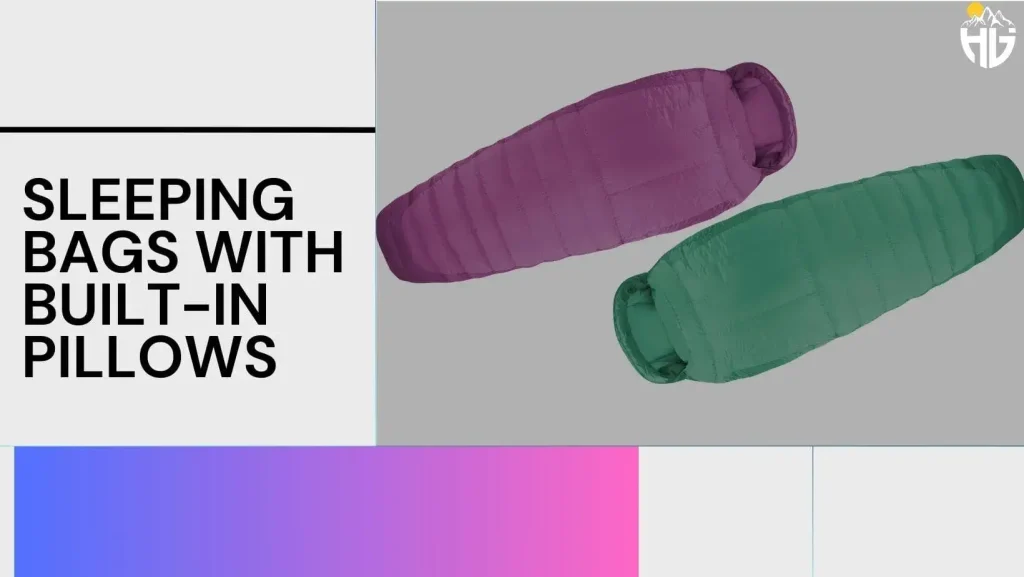
Some sleeping bags come with built-in pillows, eliminating the need to carry a separate pillow. These bags are convenient for campers who value comfort and want to reduce their packing list.
Sleeping Bags with Enhanced Insulation
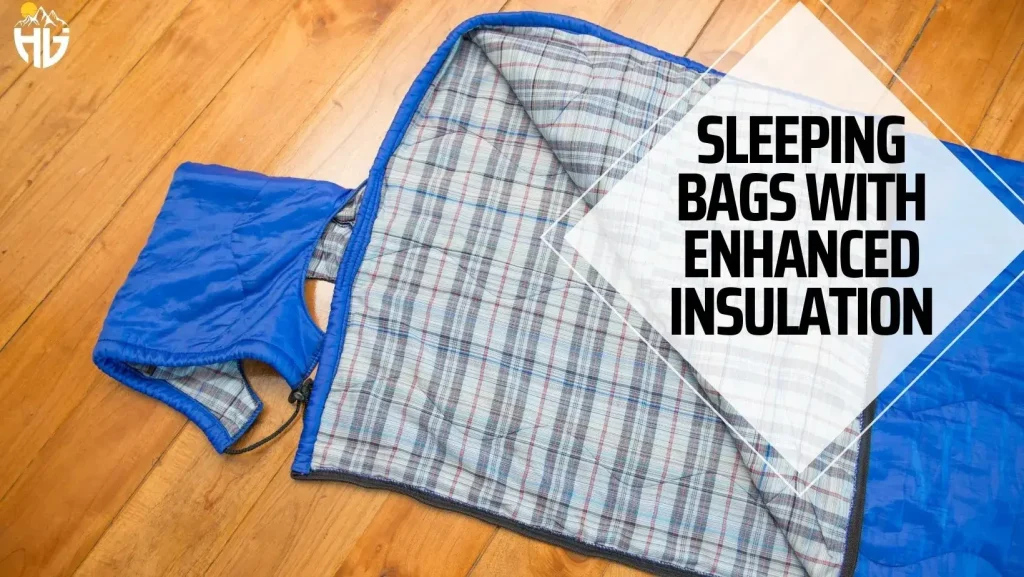
Innovations in insulation technology have led to sleeping bags with enhanced warmth. Some feature additional insulation in key areas like the footbox and torso, ensuring optimal warmth distribution.
Activity the Sleeping Bag Will Be Used For
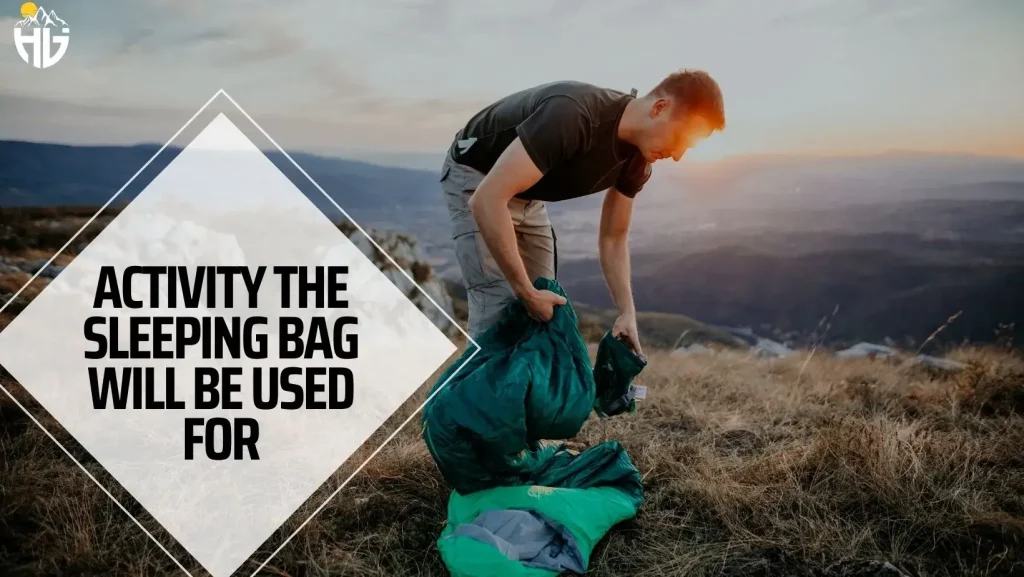
Selecting the right sleeping bag is more than just choosing something warm to curl up in; it’s about tailoring your choice to the specific activity you have in mind.
Whether you’re embarking on a summer camping trip, hiking through the wilderness, or planning a winter expedition, understanding how the activity impacts your choice of sleeping bag is essential.
Camping
For traditional camping trips where you’ll be staying at a campsite, a versatile 3-season sleeping bag is a great choice.
It provides the warmth you need during cool nights and can handle a variety of weather conditions. Look for a bag with a temperature rating that matches the lowest temperature you expect to encounter.
Backpacking
Opt for an ultralight sleeping bag that won’t weigh you down on the trail. These bags are designed to be lightweight and compact, making them ideal for long hikes where every ounce counts.
Hiking
Hiking involves more movement, so a semi-rectangular sleeping bag might be your best bet. These bags provide a balance between warmth and roominess, allowing you to move comfortably while still staying cosy during breaks or rest stops.
Mountaineering and Winter Expeditions
For mountaineering or winter expeditions where temperatures plummet, a specialised 4-season sleeping bag with exceptional insulation is essential. These bags are designed to handle extreme cold conditions and keep you warm in the harshest environments.
Adventure Travel
When embarking on adventure travel, where conditions might vary from city to wilderness, a versatile 3-season sleeping bag is a reliable choice. It can handle different weather scenarios, ensuring you’re prepared for various accommodations.
Sleeping Bags for Children and Family Camping
For family camping trips or when camping with children, consider sleeping bags designed for kids. These bags are usually smaller and come in fun designs, making the camping experience enjoyable and memorable for young adventurers.
Sleeping Bags for Indoor and Guest Use
If you need a sleeping bag for indoor use or for accommodating guests, you can opt for a more budget-friendly option. These bags don’t need to withstand outdoor conditions, so they can be simpler in design.
Caring for Your Sleeping Bag
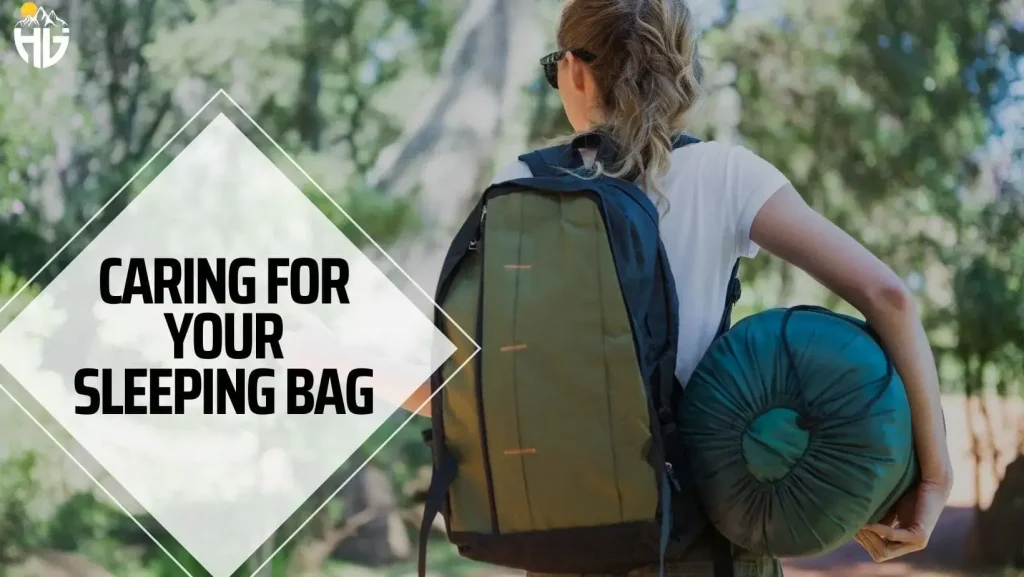
To ensure that your sleeping bag remains in excellent condition and continues to perform optimally, proper care is essential. Here are some tips to help you maintain your sleeping bag and extend its lifespan:
Follow Manufacturer’s Instructions
Each sleeping bag comes with specific care instructions from the manufacturer. These instructions are tailored to the materials and design of your bag, so it’s crucial to read and follow them closely.
Use a Liner
A sleeping bag liner acts as a protective barrier between your body and the inside of the bag. It helps minimise dirt, oils, and sweat that can accumulate over time. Liners are also easier to clean than the entire sleeping bag.
Shake It Out
After each use, give your sleeping bag a good shake to remove any debris, dirt, or sand that might have accumulated. This prevents particles from getting trapped in the insulation.
Spot Cleaning
If you notice a small stain or spill, address it promptly with spot cleaning. Use a mild soap or a specialised gear cleaner, and gently scrub the affected area. Rinse thoroughly and allow it to air dry.
Avoid Overwashing
Washing your sleeping bag too frequently can damage the delicate insulation and fabric. Only wash it when necessary, such as when it’s visibly soiled or after a particularly rugged trip.
Use a Front-Loading Washing Machine
If you need to wash your sleeping bag, use a front-loading washing machine without an agitator. Top-loading machines with agitators can cause stress on the fabric and insulation.
Select a Gentle Cycle
When washing your sleeping bag, choose a gentle cycle with cold water. Use a mild detergent specifically designed for technical fabrics. Avoid fabric softeners and bleach.
Rinse Thoroughly
Ensure that all soap is thoroughly rinsed out of the sleeping bag. Soap residue can attract dirt and affect the bag’s insulating properties.
Drying Carefully
Air drying your sleeping bag is the best option. Lay it flat on a clean surface in a well-ventilated area. Avoid hanging it, as the weight of the wet bag can cause stretching and damage.
Use Tennis Balls
If your sleeping bag is down-filled, throw a few clean tennis balls into the dryer with it on a low heat setting. This helps fluff up the down and prevents clumping.
Store Uncompressed
When not in use, store your sleeping bag in a large storage sack provided by the manufacturer. Avoid compressing it for long periods, as this can weaken the insulation.
Hang It Out
If you’re storing your sleeping bag for an extended period, hang it in a dry and cool space to maintain its loft and shape.
Avoid Direct Sunlight
Prolonged exposure to direct sunlight can weaken the fabric and cause colours to fade. Store your sleeping bag away from direct sunlight when not in use.
Regular Inspections
Before every trip, give your sleeping bag a thorough inspection. Check for any signs of wear, tear, or damage. Address any issues before they worsen.
Conclusion
Whether you’re a camping enthusiast embarking on outdoor adventures or a parent looking to provide the best sleep environment for your baby, a well-chosen sleeping bag can significantly enhance comfort and safety.
Remember to consider factors such as materials, insulation, temperature ratings, and bag type to choose the perfect sleeping bag for your needs.
FAQs
Are sleeping bags suitable for babies?
Yes, sleeping bags provide a safe and comfortable sleep environment for babies.
Can I use a summer sleeping bag in colder conditions?
It’s best to match the sleeping bag’s temperature rating with the expected conditions for optimal comfort.
Are down-filled sleeping bags better than synthetic ones?
Both have their pros and cons. Down offers an excellent warmth-to-weight ratio, while synthetic insulation retains heat when wet.
Can I wash my sleeping bag in a washing machine?
Refer to the manufacturer’s instructions. Some bags can be machine-washed, while others require special care.
What’s the difference between a mummy bag and a rectangular bag?
Mummy bags are tapered for heat retention and lightweight, while rectangular bags offer more room but are less efficient at retaining heat.
How often should I wash my sleeping bag?
Washing frequency depends on usage. Generally, aim to wash your sleeping bag once every camping season or when visibly soiled. Overwashing can damage the insulation.
Can I use a regular washing machine for my sleeping bag?
Yes, you can use a front-loading washing machine without an agitator. Avoid top-loading machines with agitators, as they can stress the fabric and insulation.
Can I dry my sleeping bag in a dryer?
Yes, you can use a dryer on a low heat setting for synthetic sleeping bags. For down-filled bags, use a dryer with clean tennis balls on low heat to prevent clumping.
Should I use fabric softener when washing my sleeping bag?
No, avoid using fabric softeners or bleach. They can damage the technical fabrics and affect the insulation’s performance.
How do I store my sleeping bag between trips?
Store your sleeping bag in a large storage sack provided by the manufacturer. Avoid compressing it for long periods to maintain an insulation loft.
Can I hang my sleeping bag to dry?
While it’s best to air dry your sleeping bag flat, hanging it can be okay if done gently. Hang it in a well-ventilated area out of direct sunlight.
Is spot cleaning effective for stains on sleeping bags?
Yes, spot cleaning can be effective for small stains. Use a mild soap or gear cleaner and scrub gently. Rinse thoroughly and air dry.
Can I wash my sleeping bag in hot water?
It’s recommended to use cold water for washing sleeping bags, as hot water can damage the fabric and insulation.
How can I prevent my sleeping bag from getting too dirty?
Using a sleeping bag liner can help minimise dirt and oils transferred from your body. Shake out your bag after each use to remove debris.
Can I wash my sleeping bag in the bathtub?
While washing your sleeping bag in a bathtub can be done, it’s important to rinse it thoroughly to remove all soap residue.

